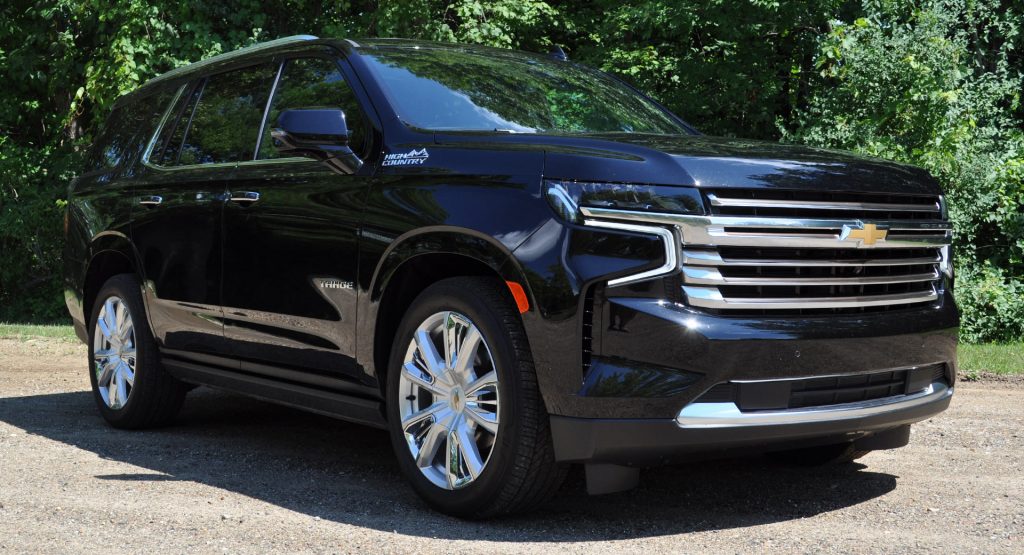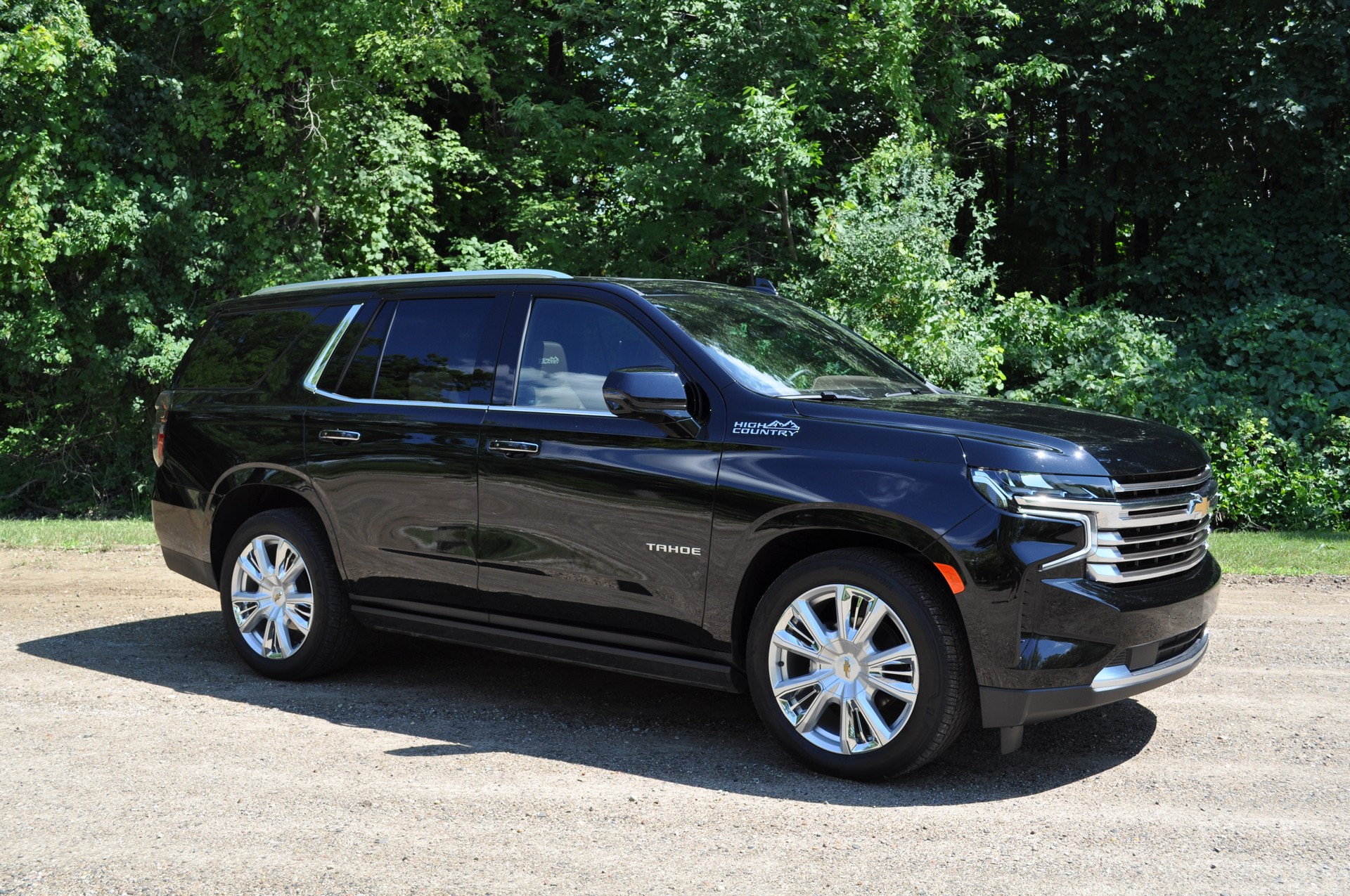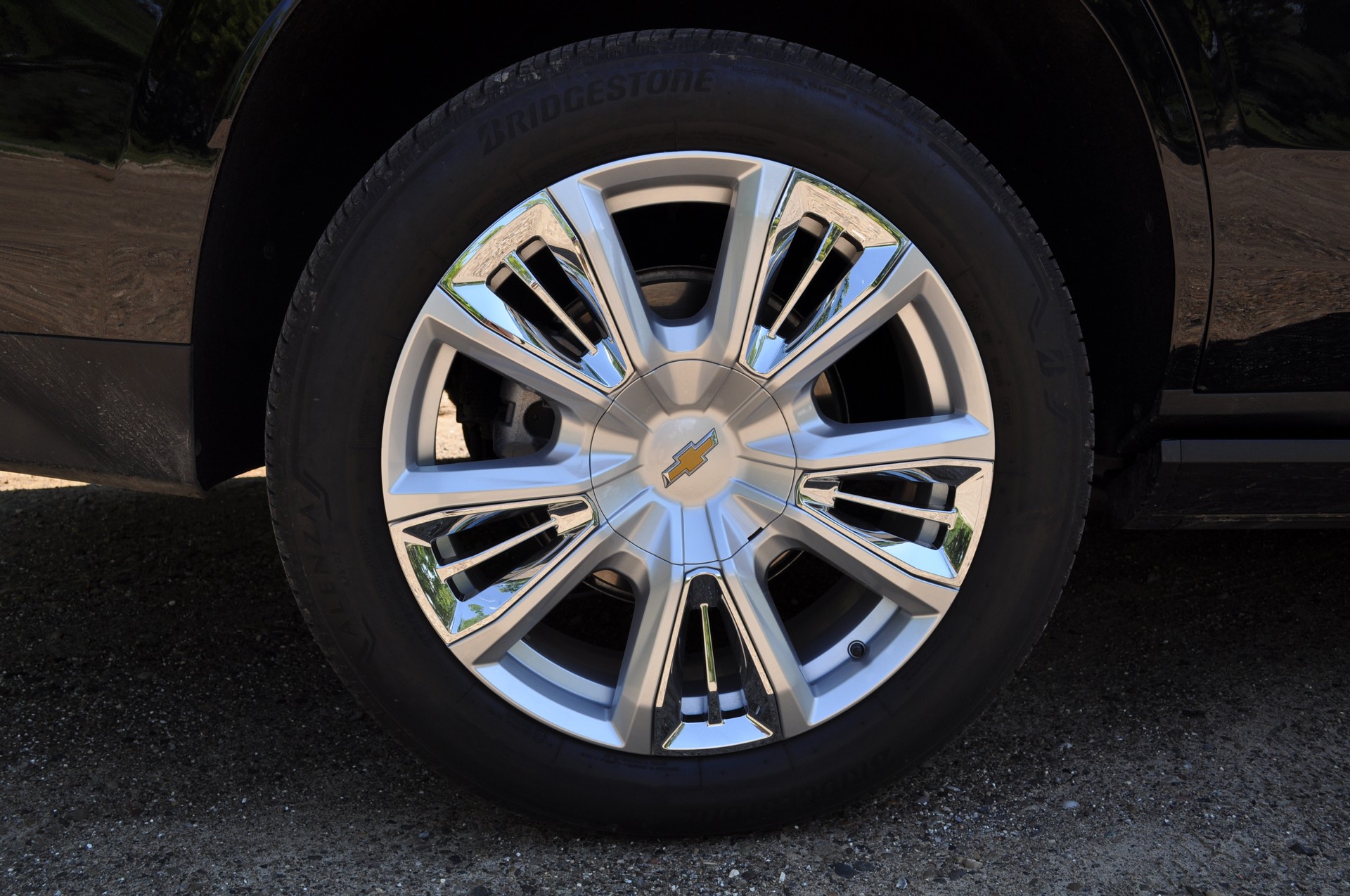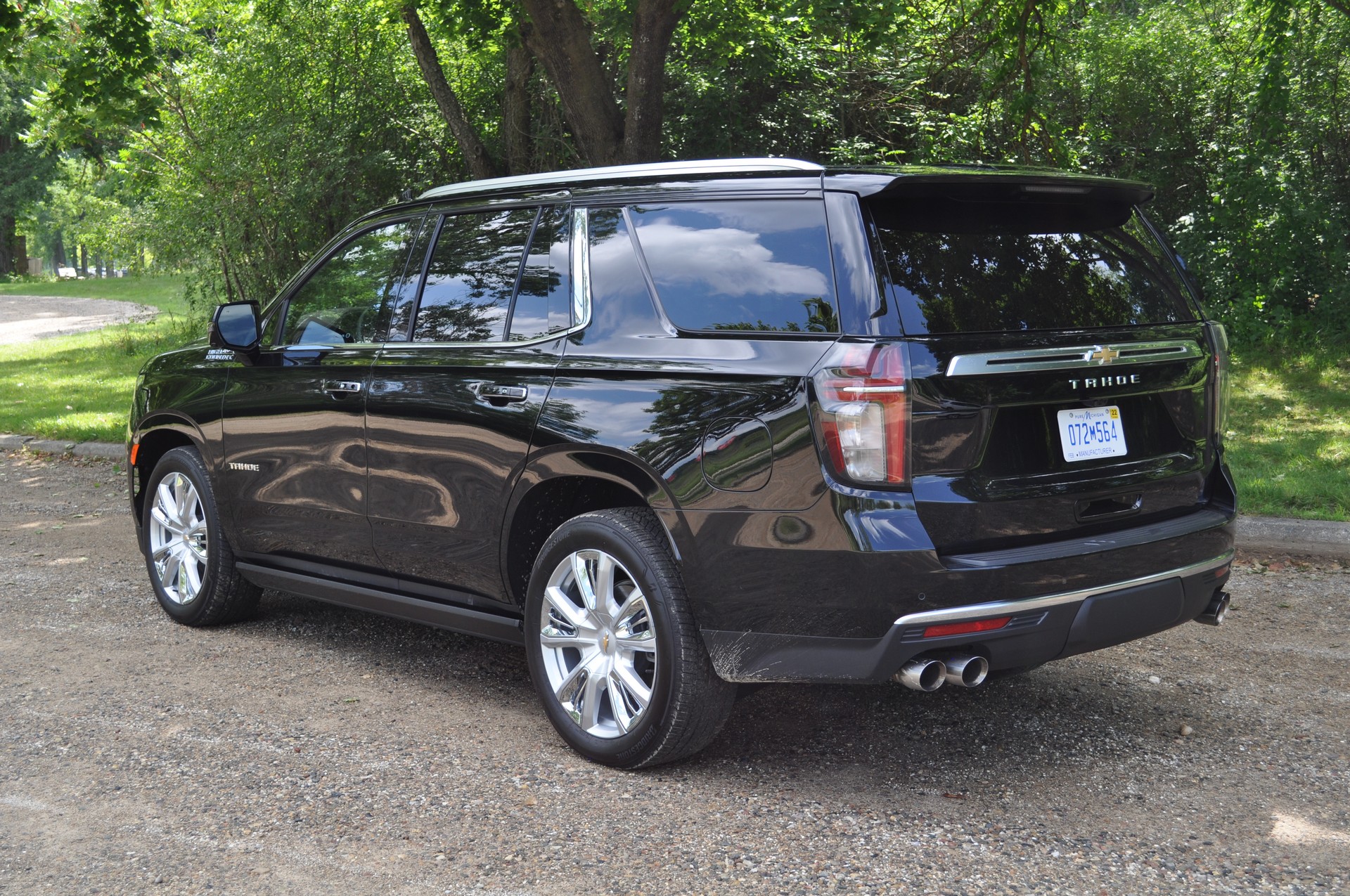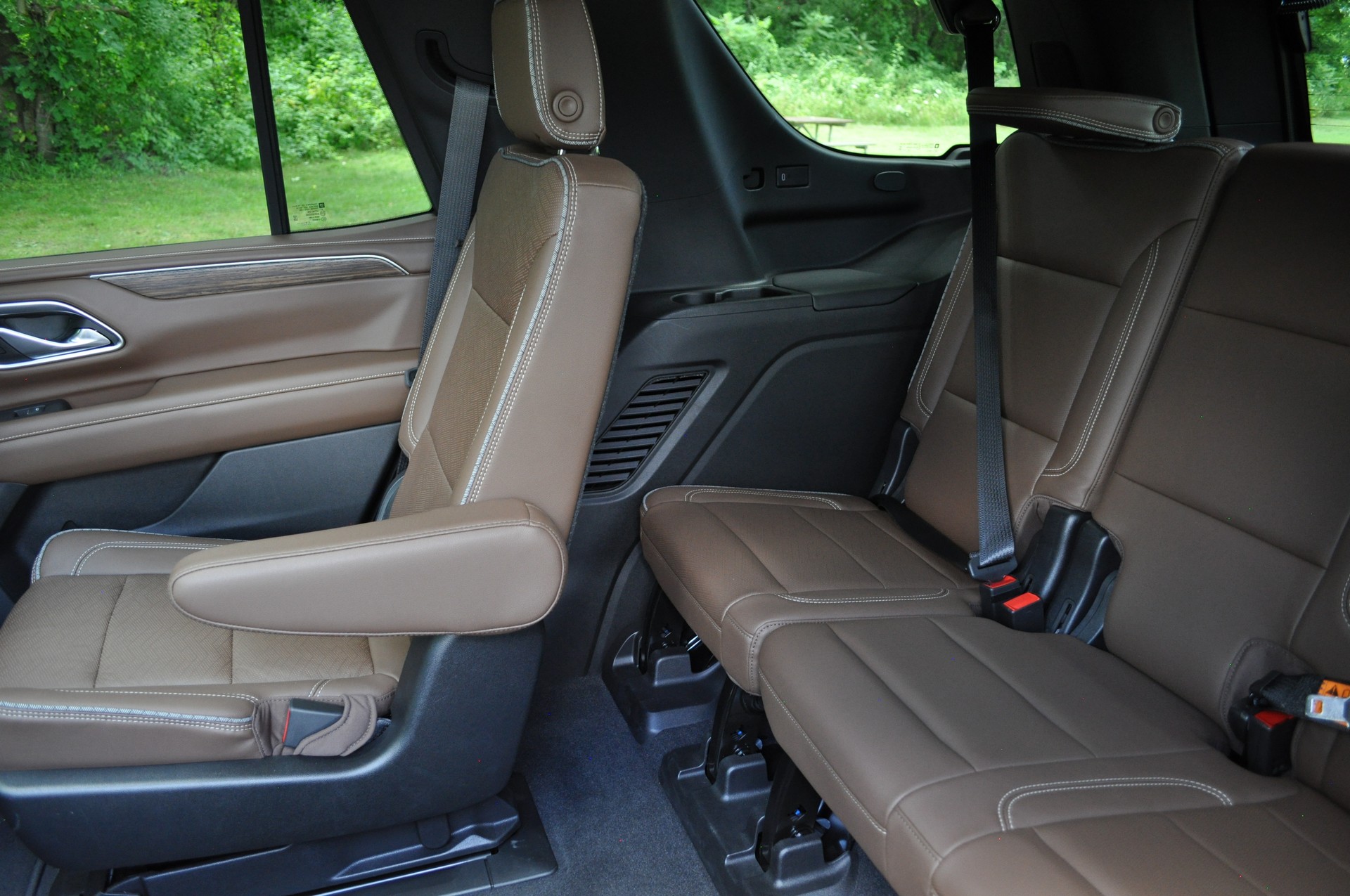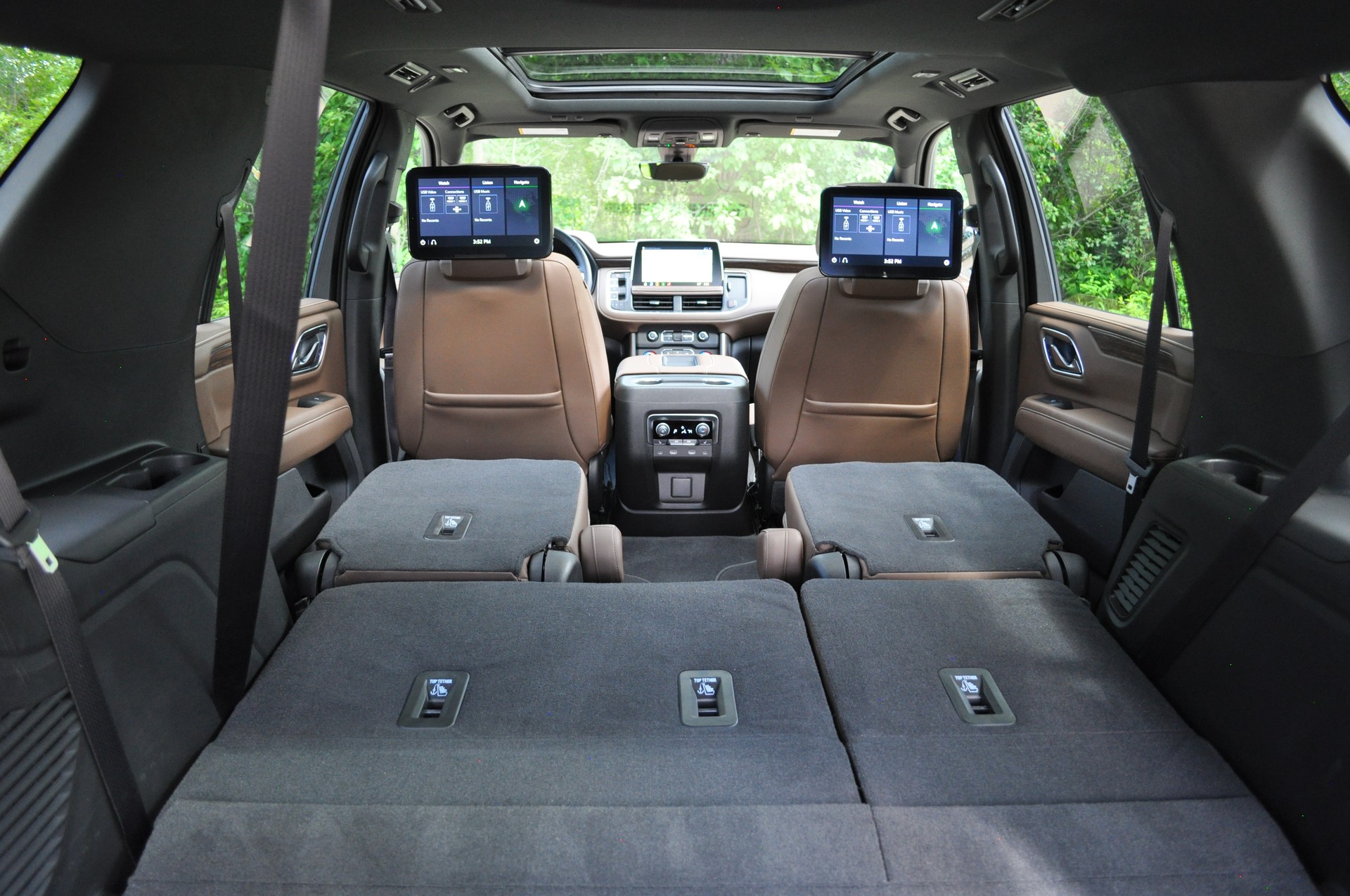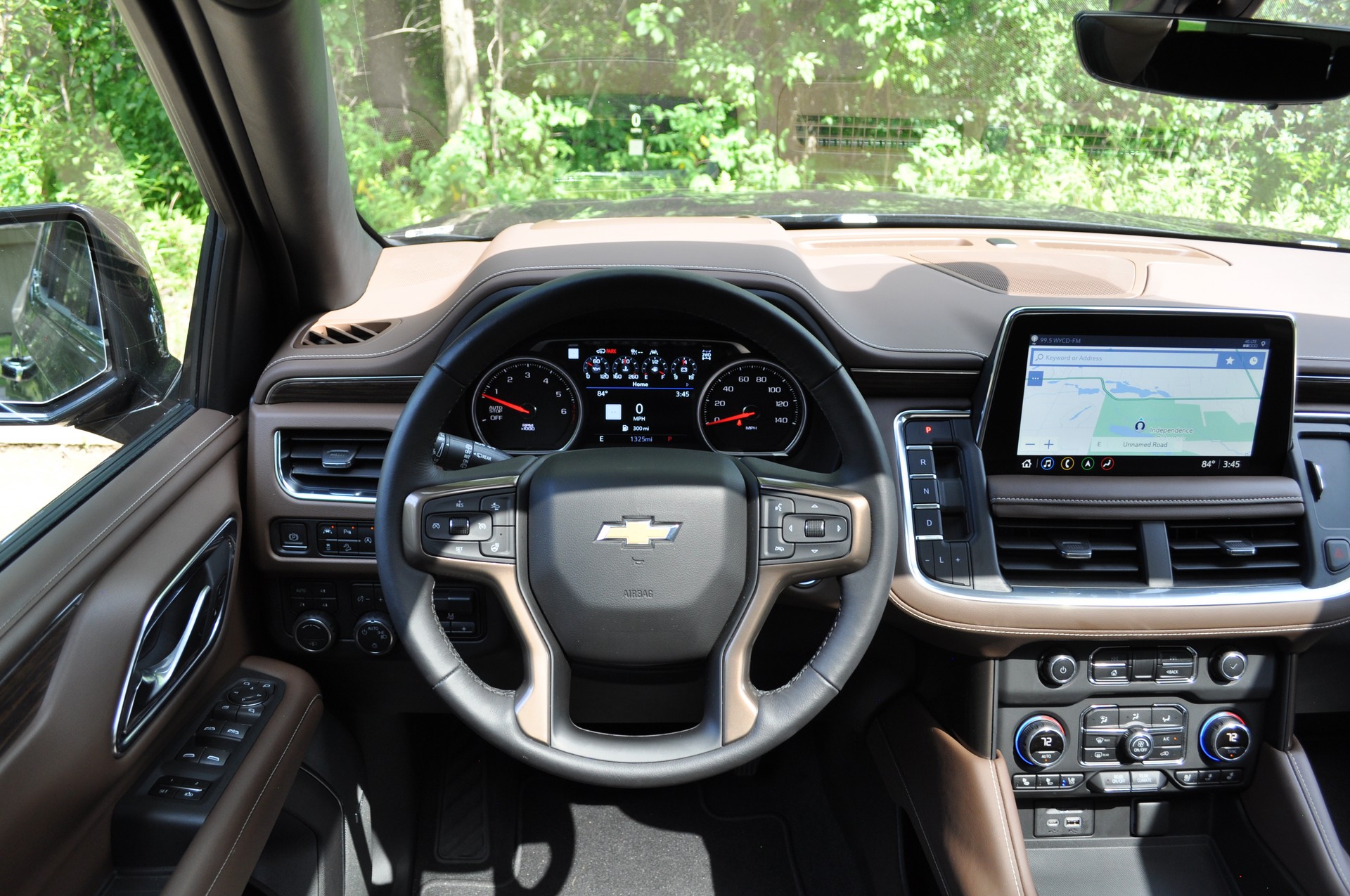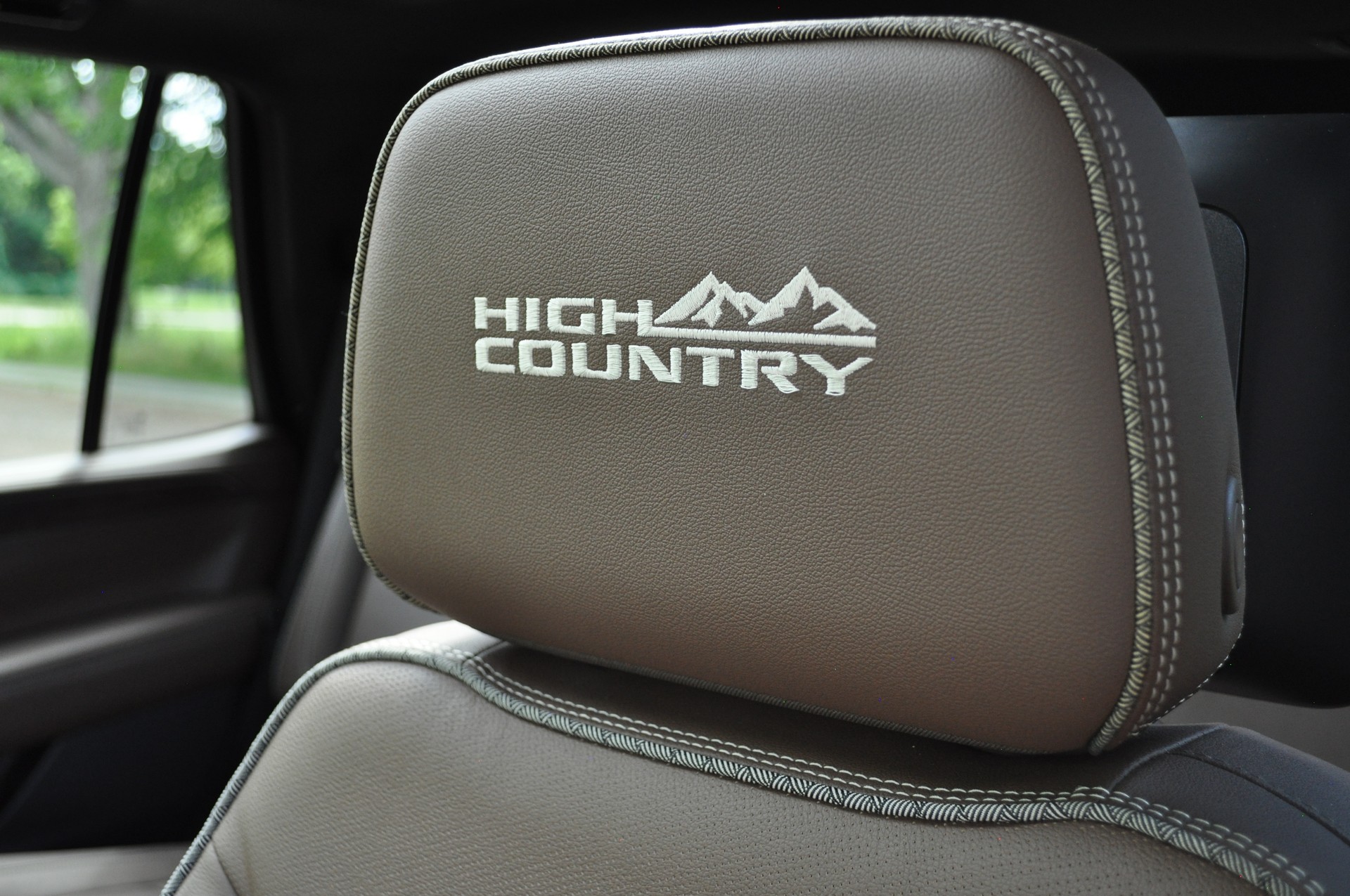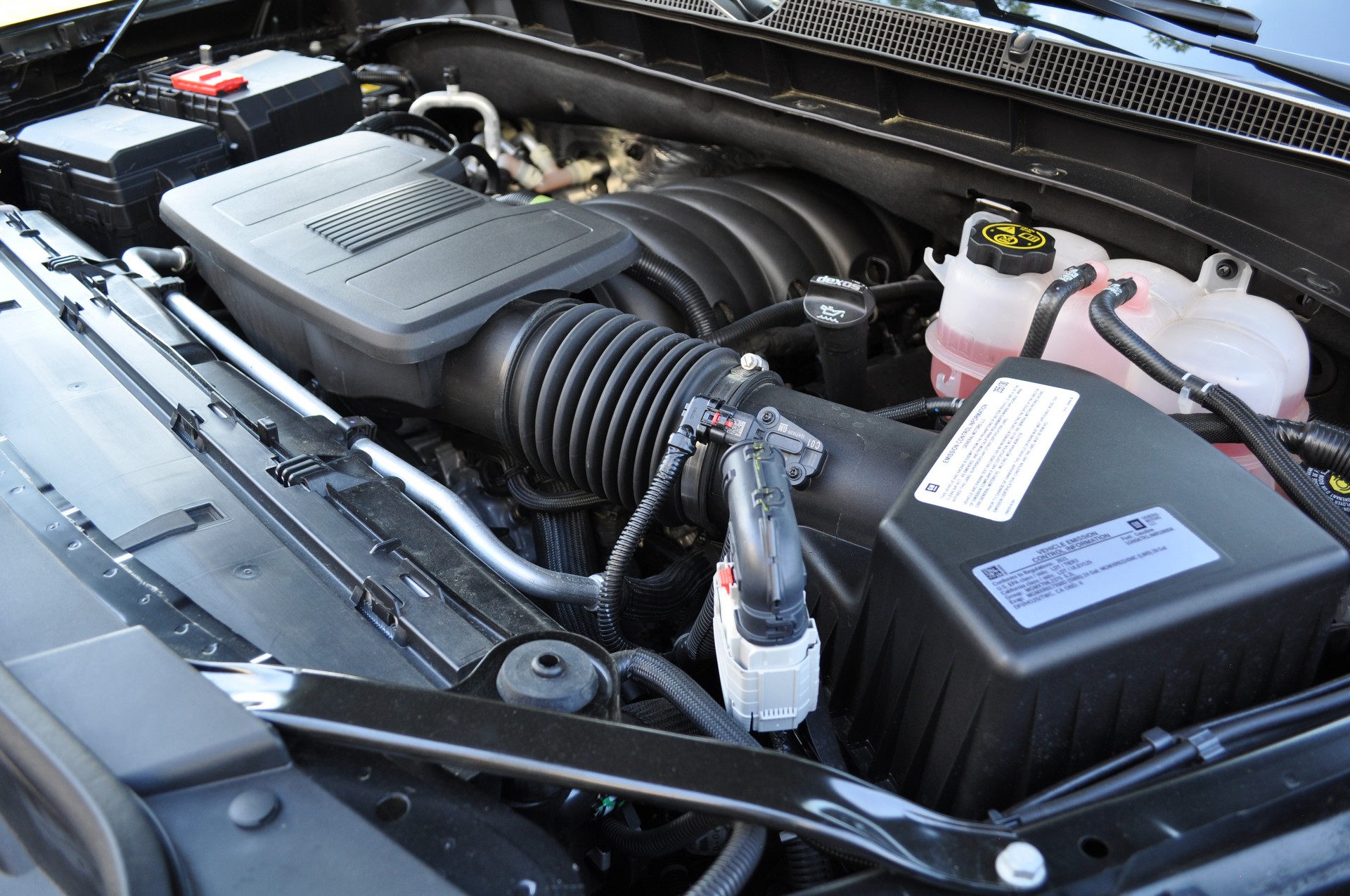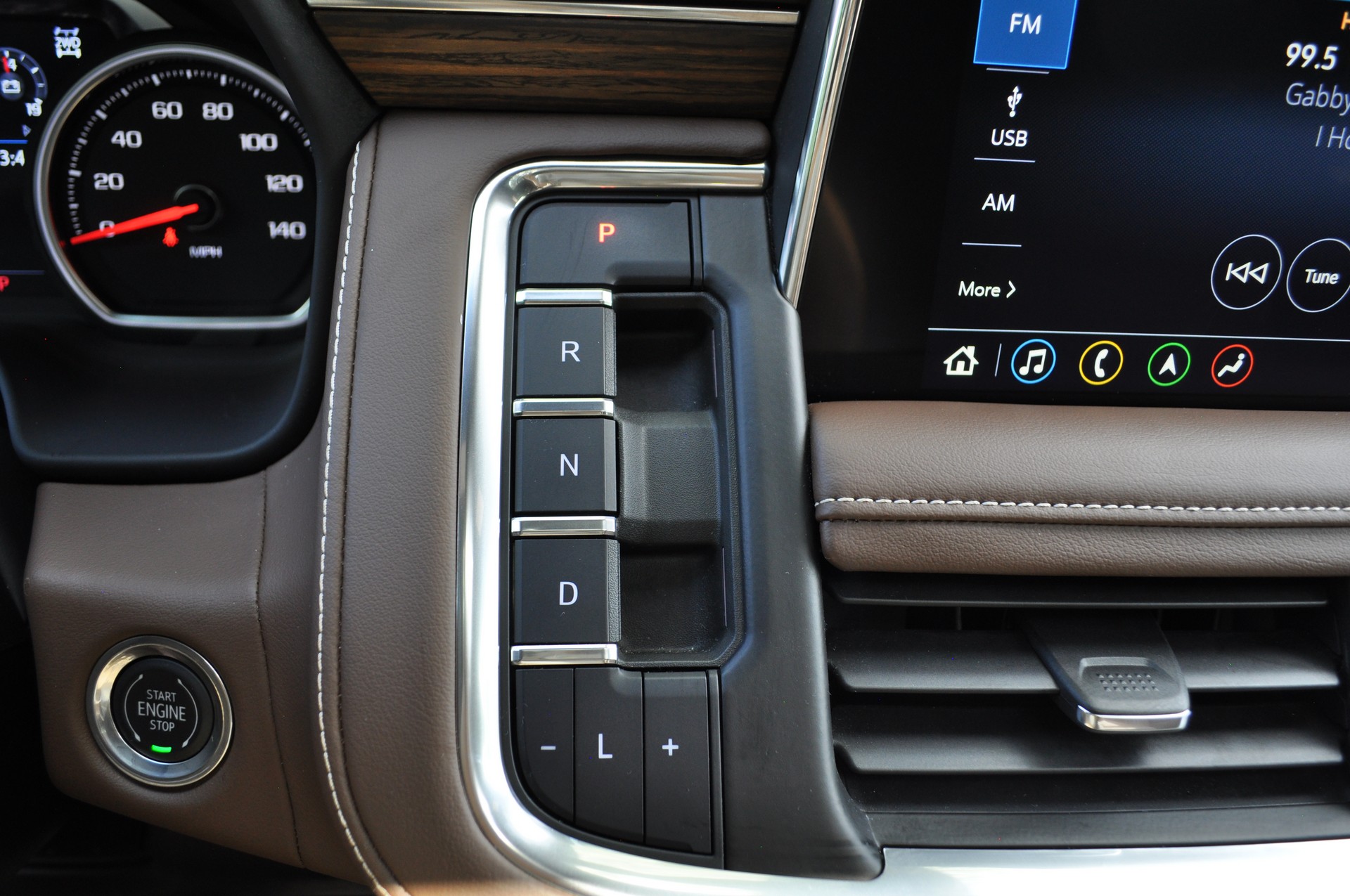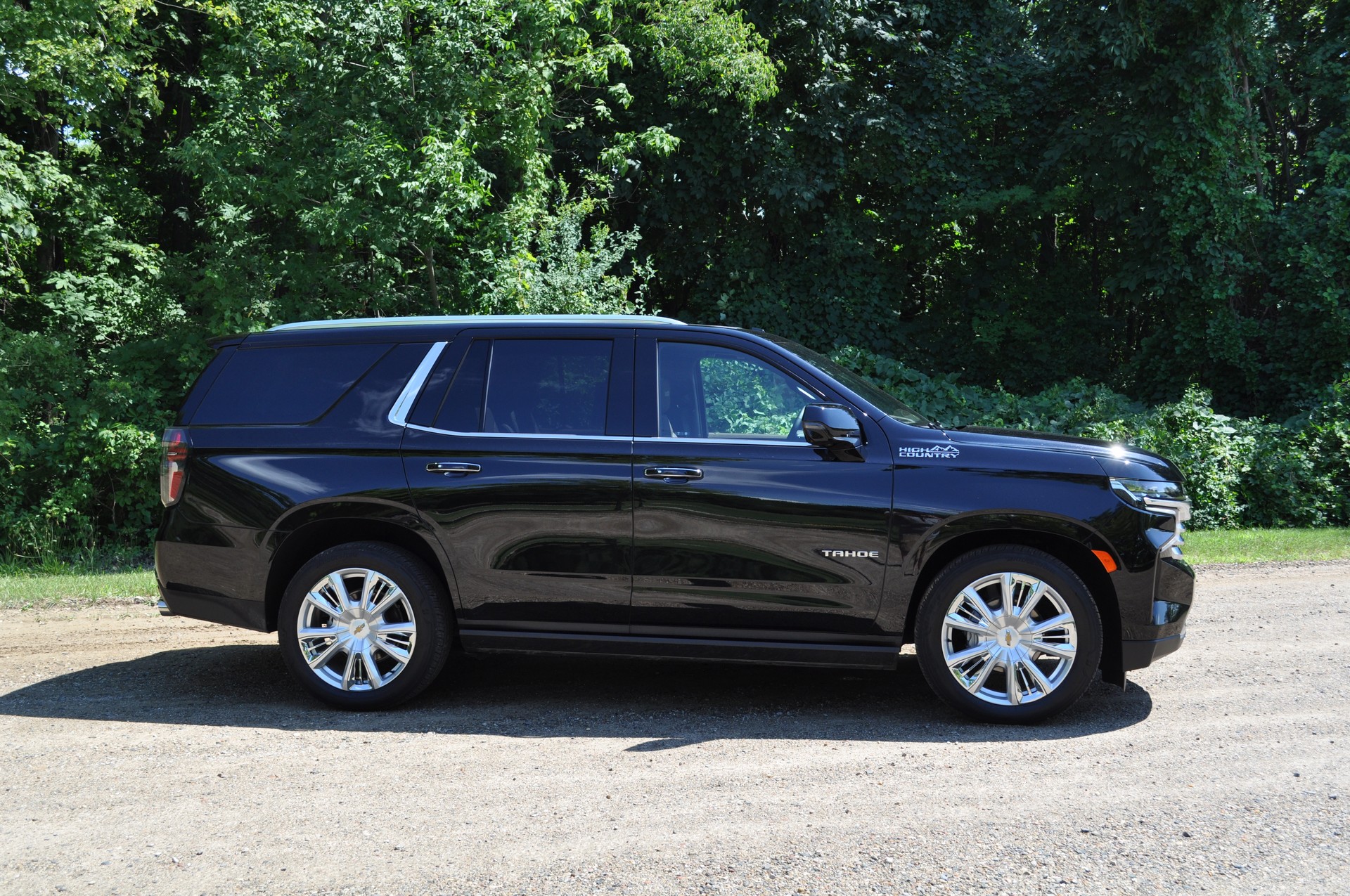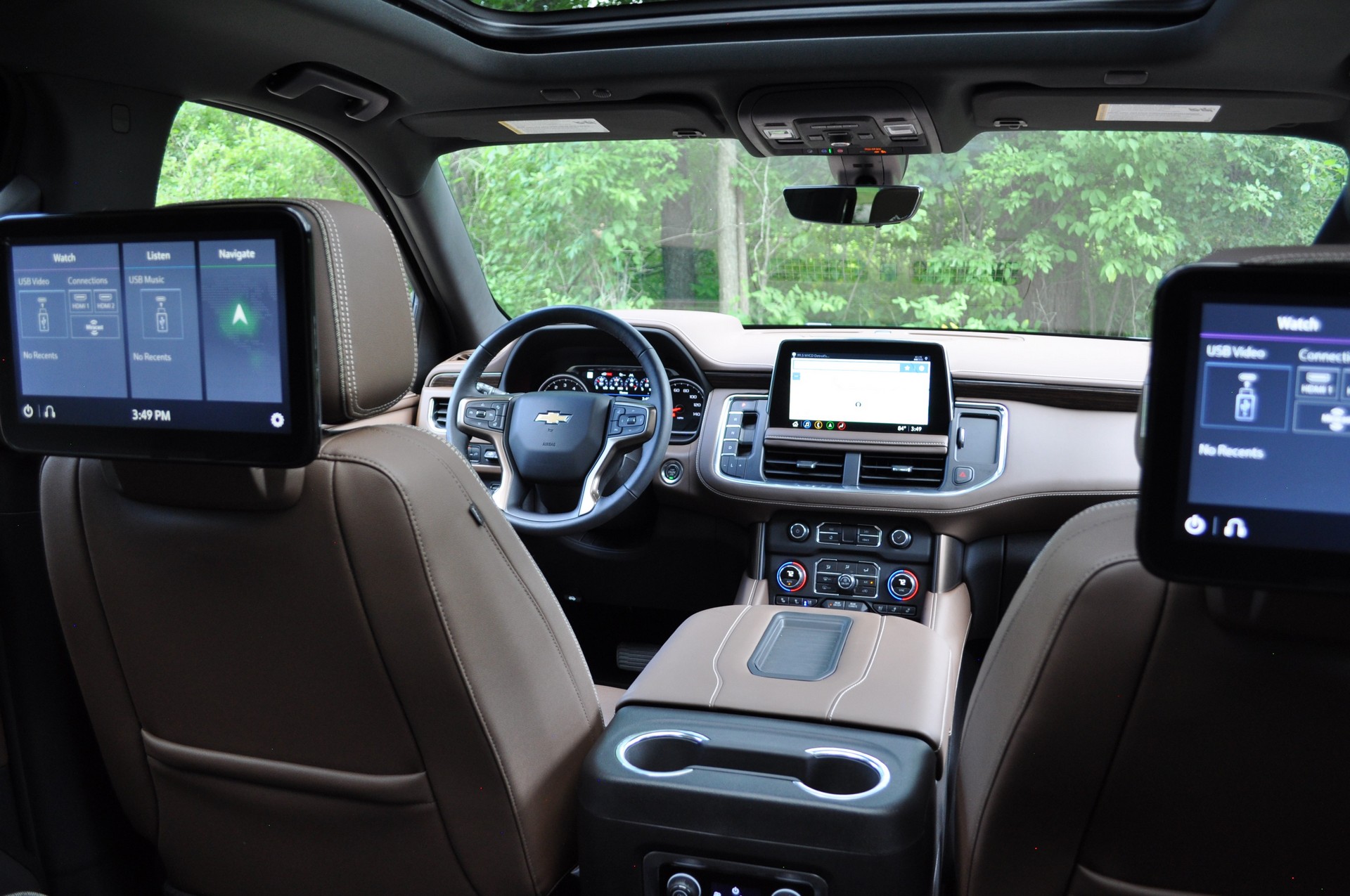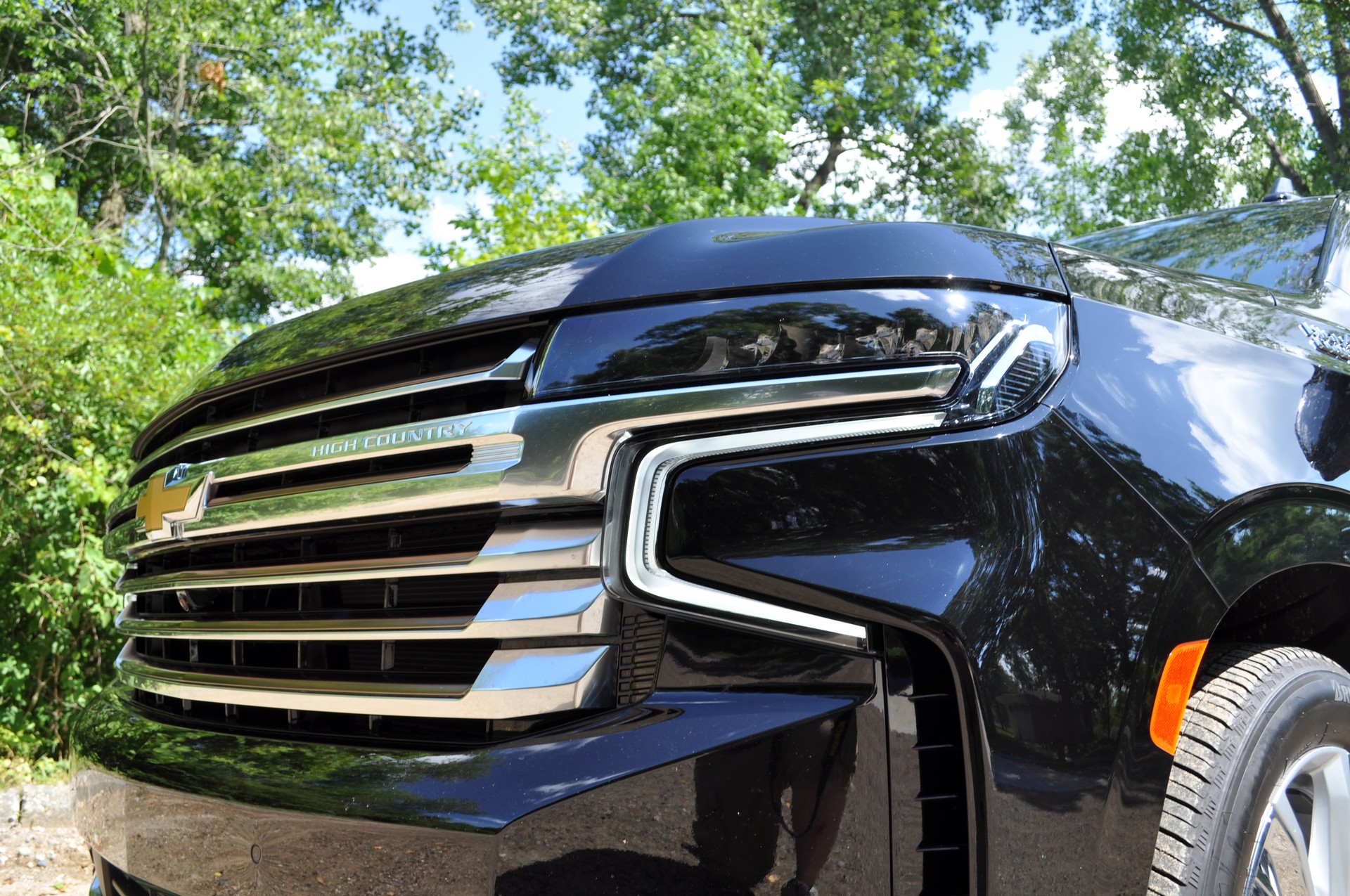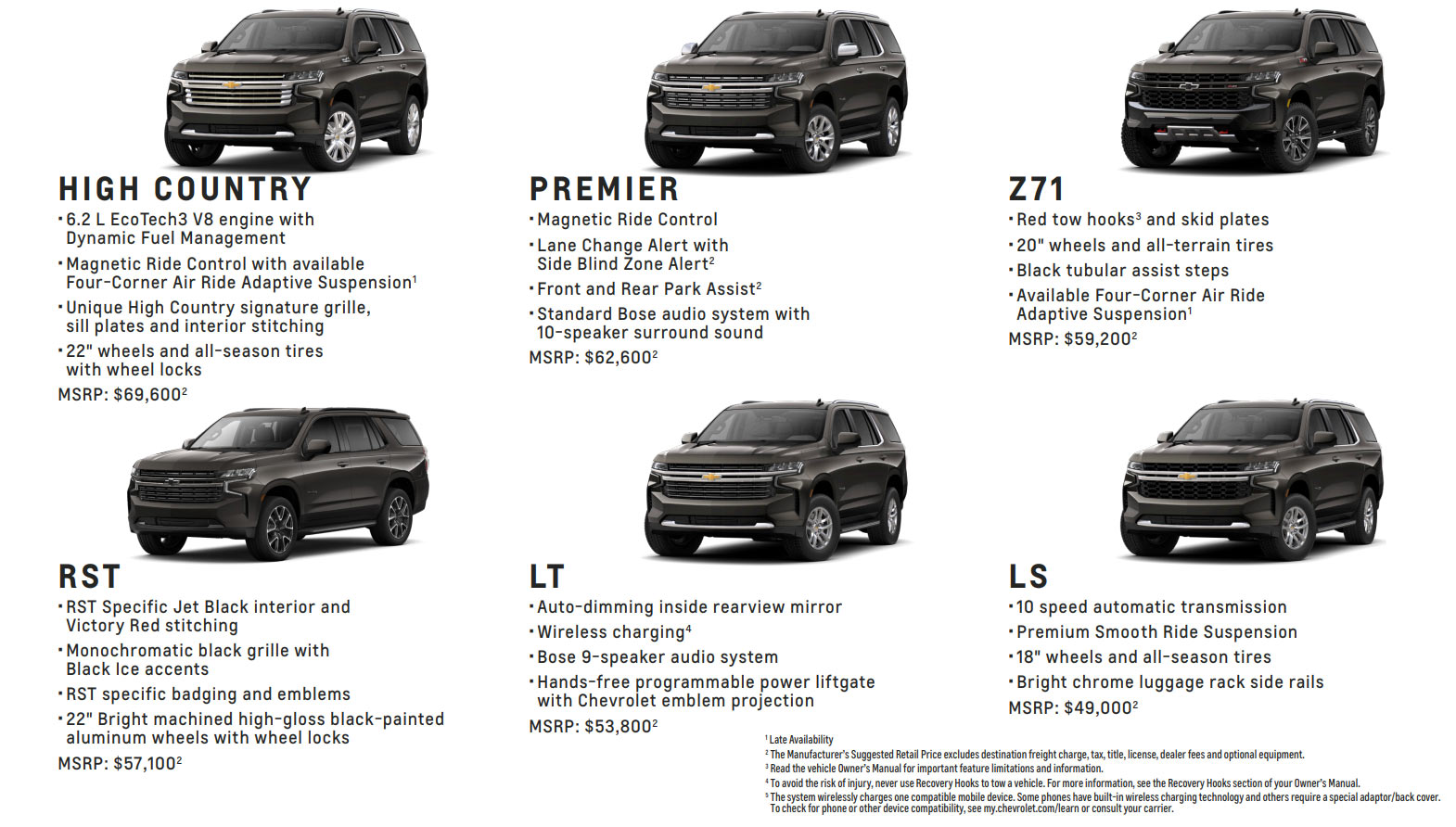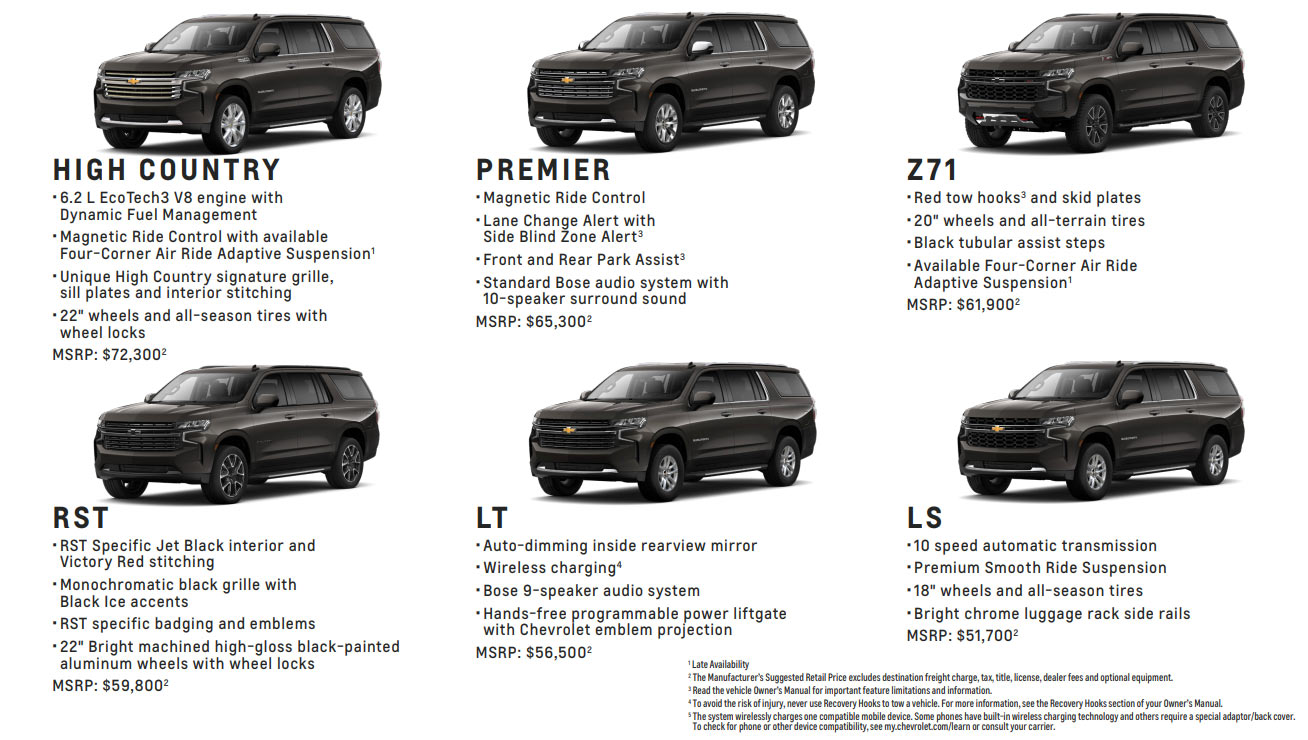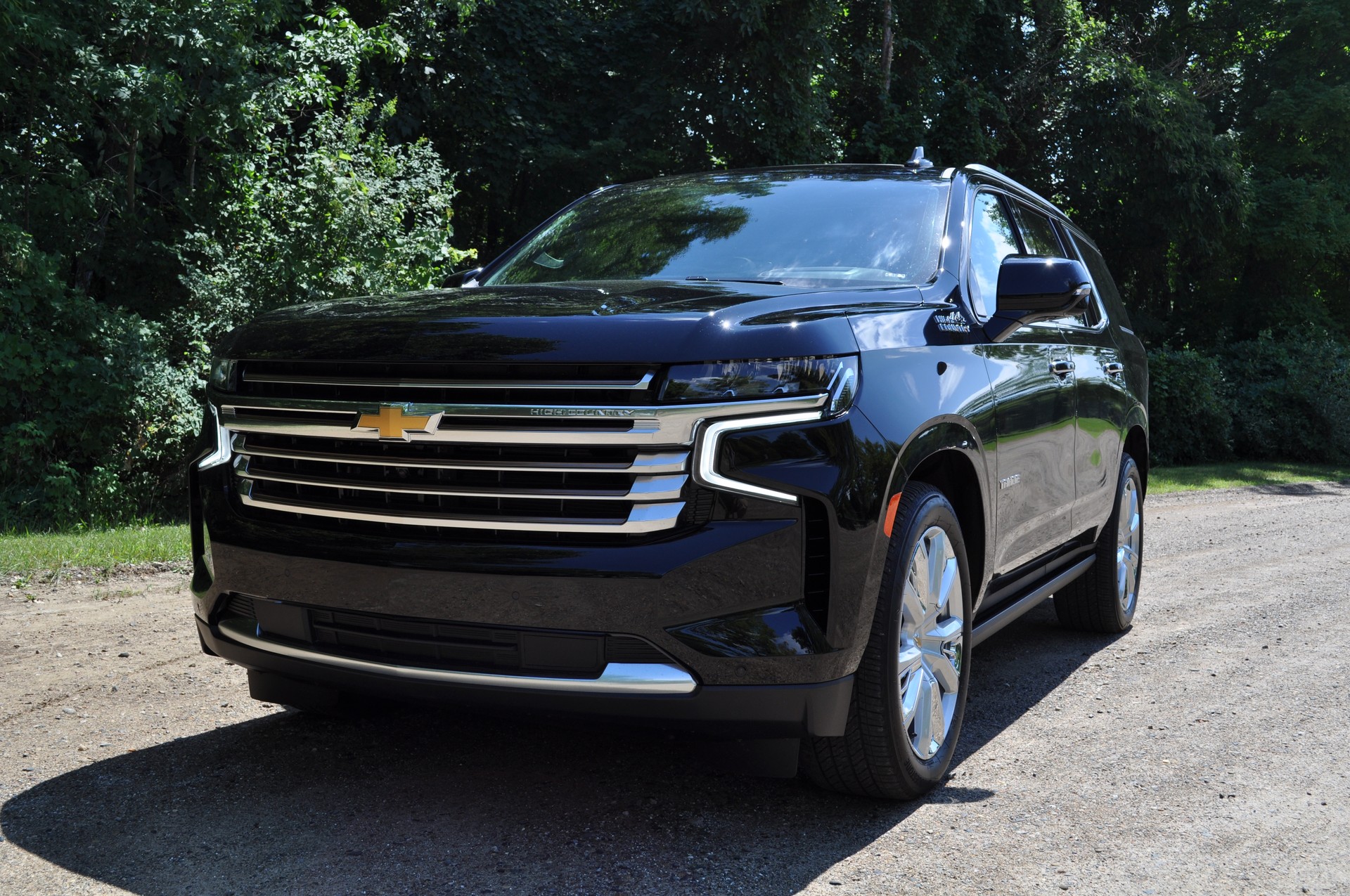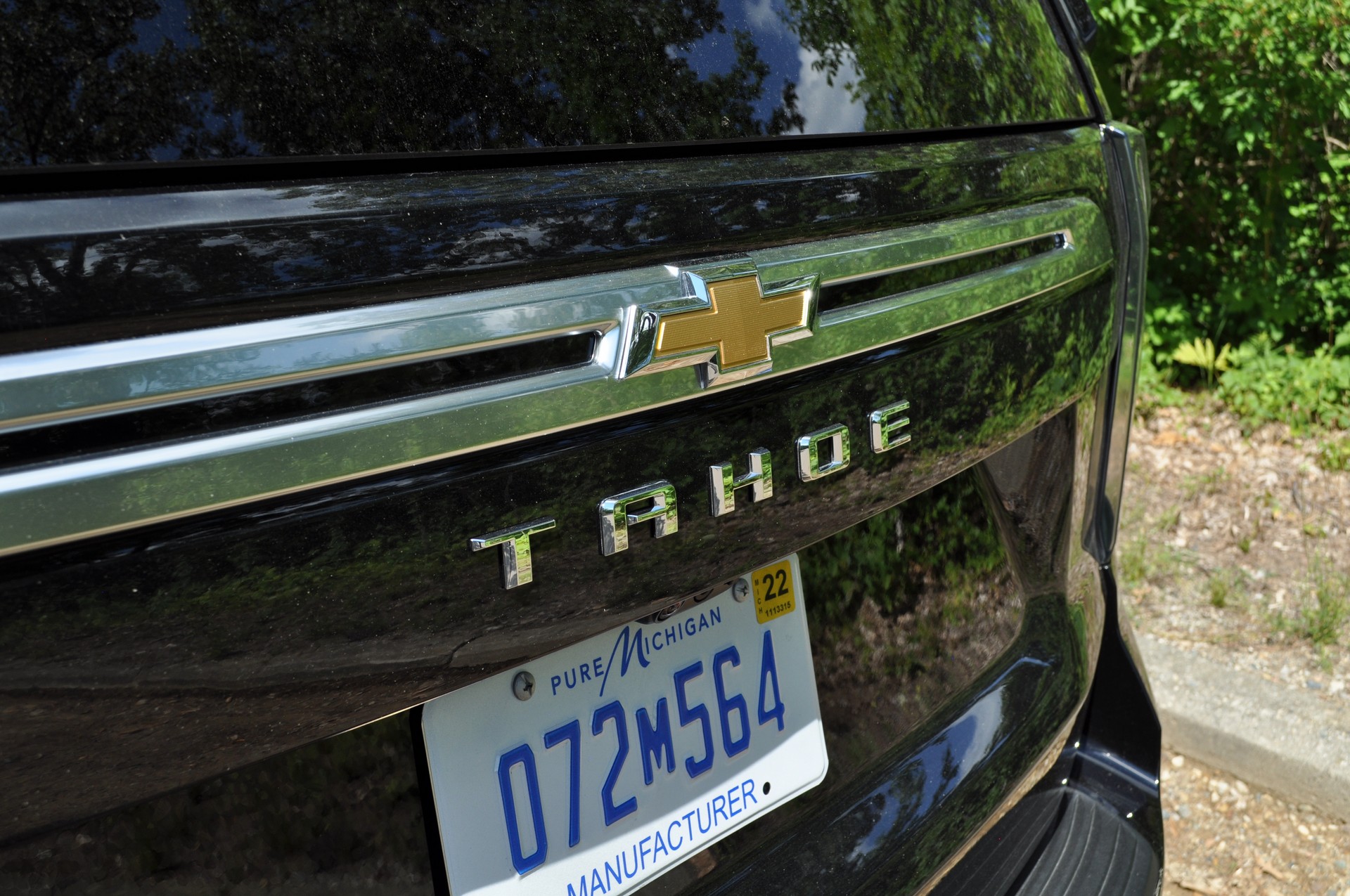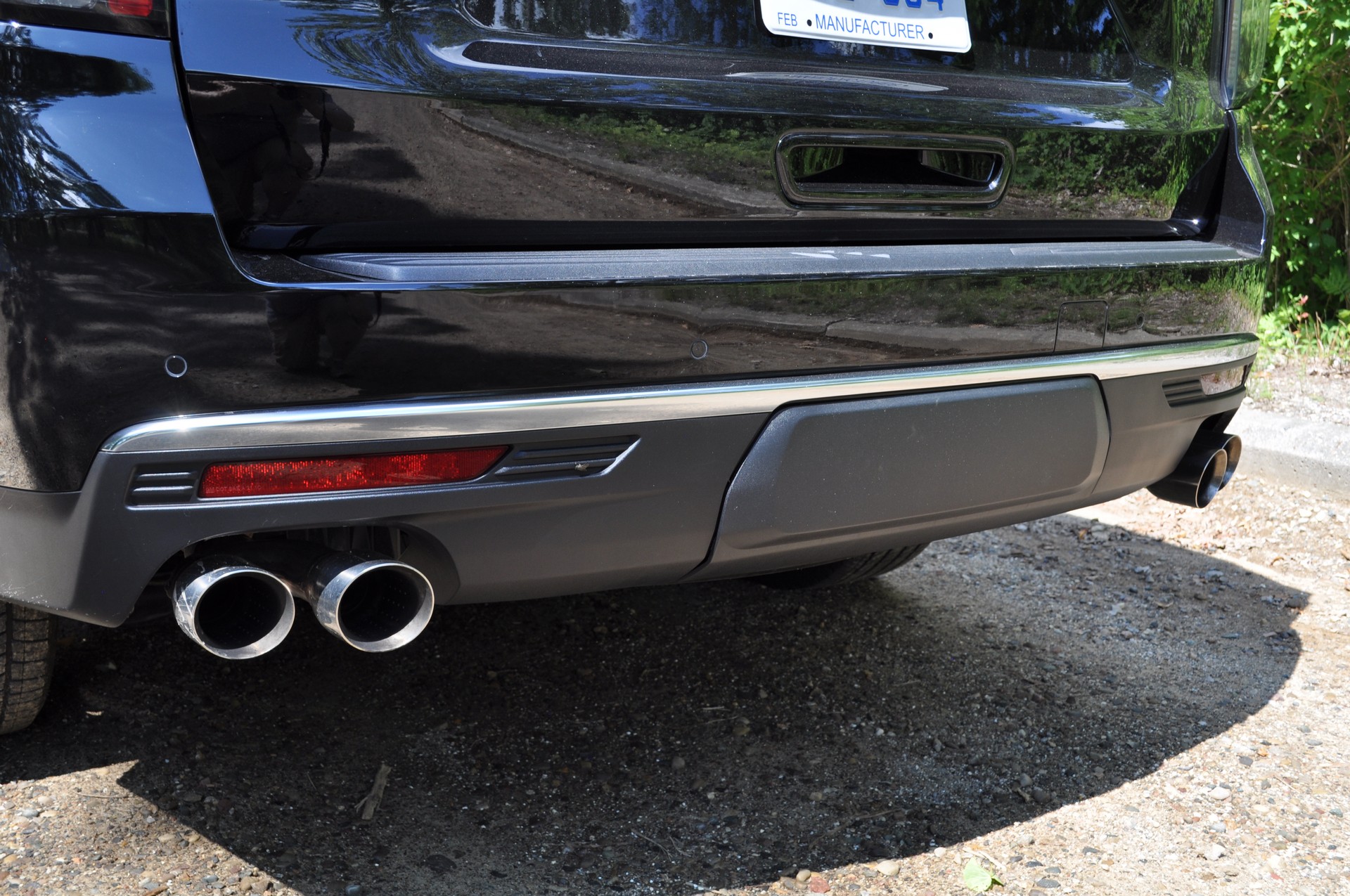The Chevrolet Tahoe and Suburban are renowned for their people and cargo hauling capabilities, but you wouldn’t exactly call them excellent all-arounders.
A lot of that can be chalked up to their truck-based platform which has improved over the years, but still left a number of things to be desired. However, the 2021 models are all-new, significantly improved and even larger than before. On top of that, they adopt a new independent rear suspension and a host of modern technologies.
We recently spent some time with the range-topping Tahoe High Country and it’s clear this isn’t the Tahoe of old. In fact, it’s better in almost every conceivable way.
Large And In Charge
The Tahoe has always looked okay, but it’s been largely overshadowed by the stylish GMC Yukon and flashier Cadillac Escalade.
The 2021 Tahoe and Suburban reassert themselves in the design department and feature greater distinction between their six trim levels. This is easily seen up front as each trim level has a unique grille ranging from basic to luxurious.
When it comes to the High Country, the model is distinguished by a grille that features horizontal chrome bars with bronze accents. The model also has special badging and 22-inch wheels with chrome inserts.
That’s just the tip of the iceberg as the luxury SUV has acoustic glass, bright roof rails and IntelliBeam LED headlights. Speaking of LEDs, there’s distinctive daytime running lights and vertical taillights with integrated Chevrolet badging.
Rounding out the highlights are rain-sensing wipers and a hands-free power liftgate. The model also has chrome accents and a four-tailpipe exhaust system which hints at the V8 engine under the hood.
Our tester was loaded to the gills and equipped with a panoramic glass sunroof, power-retractable side steps and the Max Trailering Package.
Putting the equipment aside, the Tahoe and Suburban are even larger than their predecessors. The 2021 Tahoe is 6.7 inches (170 mm) longer than before and now has a wheelbase that spans 120.9 inches (3,071 mm). That’s an increase of 4.9 inches (124 mm) and it pays huge dividends in the interior.
The Suburban also grows, but not as much. Overall length increases by 1.3 inches (33 mm), while the wheelbase spans an additional 4.1 inches (104 mm).
All this makes for one impressive, but understated SUV. We think the Tahoe looks pretty good, and it should appeal to buyers who are turned off by the flashier Escalade and Yukon Denali.
Chevrolet Goes Lux
Chevrolet might be a mainstream brand, but the Tahoe High Country manages to feel pretty luxurious. Part of this can be attributed to the two-tone tone interior, which features perforated mocha leather seats with contrast stitching and elegant piping.
The front seats are comfortable and offer heating as well as ventilation. The same can be said about the second row, but they’re limited to just heating. However, the second row seats can now slide approximately 5.5 inches (140 mm) forward or backward. This means second row passengers can sprawl out, or move their seat forward to give third row passengers a bit more room.
The third row seats used to be limited to children, but that’s no longer the case as they now have 34.9 inches (886 mm) of legroom. That’s a massive increase of 10.1 inches (257 mm) and it means adults can fit back there.
To give you an idea of how much room there is, this 6’ 2” reviewer can fit in the third row while still leaving enough room in the second row to sit comfortably. However, the third row is a bit tight in terms of knee and headroom. That being said, a quick trip back there wouldn’t feel like a prison sentence.
Speaking of space, the revised packaging allowed engineers to lower the rear load floor by 5.3 inches (135 mm). This allows for even more cargo room and a nearly flat load floor.
Thanks to the lower floor and the increased dimensions, the Tahoe and Suburban are cavernous. In the Tahoe, there’s 25.5 cubic feet (722 liters) of room behind the third row and 122.9 cubic feet (3,480 liters) behind the first row. Both figures dwarf the Ford Expedition which has up to 20.9 cubic feet (592 liters) of room behind its third row and 104.6 cubic feet (2,962 liters) behind the first row.
If space is what you need, look no further than the Suburban. It has 41.5 cubic feet (1,175 liters) of room behind the third row and 144.7 cubic feet (4,097 liters) behind the first row.
Of course, all the space in the world won’t make up for a disappointing interior. Thankfully, that’s not the case as the Tahoe mostly uses highly quality materials. There is some hard plastic, but it’s low on the dashboard and door panels. This means it’s out of sight and out of mind.
Elsewhere, wood trim and metallic accents add a bit of luxury to the cabin. The range-topping High Country also has leather-wrapped armrests, dashboard stitching and a responsive 10.2-inch infotainment system. The latter is flanked by a new push-button shifter and an odd storage compartment.
Most controls are logically placed and easy to access, but the home and back buttons for the infotainment system are located far down on the center stack. It’s an odd place for them, but you’ll rarely use them as they are redundant.
Speaking of the center stack, it features dedicated climate controls and a host of ports. There are also charging ports for second and third row passengers.
Thankfully, second row passengers aren’t treated like second-class citizens as they get climate controls and an available rear seat entertainment system. The latter features two 12.6-inch displays, wireless headphones and dual HDMI ports.
The High Country also comes equipped with a heated steering wheel, a wireless smartphone charger and an 8-inch display in the instrument cluster. Other highlights include GPS navigation, a power tilt / telescoping steering column and a 10-speaker Bose audio system.
While rearward visibility is a bit of an issue, the model is equipped with large side mirrors and a rear camera mirror. The latter is a conventional rearview mirror, which switches to a digital display at the flip of a switch.
In digital mode, it provides an unobstructed view behind the Tahoe and this makes it an excellent tool when backing up. It also provides better nighttime visibility, but I found the digital mode a bit distracting during daytime.
Speaking of technology, the Tahoe and Suburban can be equipped with a 15-inch head-up display. It puts key information – such as your speed, the speed limit and directions – right in your field of view. It also provides a massive warning about nearby pedestrians and impending collisions.
Overall, the Tahoe High Country has a spacious, quiet and high-tech interior. While the design pales in comparison to the similarly priced Cadillac Escalade, the model is the ultimate Chevy SUV.
Two V8s And An All-New Diesel
The Tahoe and Suburban can be equipped with three different engines. Most models have a 5.3-liter V8 that pumps out 355 hp (265 kW / 360 PS) and 383 lb-ft (519 Nm) of torque. However, the High Country has a brawny 6.2-liter V8 with 420 hp (313 kW / 426 PS) and 460 lb-ft (624 Nm) of torque.
Chevrolet will also offer a 3.0-liter turbodiesel inline-six on all trims except Z71. The engine is slated to become available later this year, and it will produce 277 hp (207 kW / 281 PS) and 460 lb-ft (623 Nm) of torque.
GM is still in the process of getting the engine certified, but they’ll be the only automaker to offer a full-size diesel SUV in the United States. They also hinted the engine will give the Tahoe and Suburban “some of the highest fuel economy ratings in the segment.”
Officials noted they’re introducing the diesel engine in response to consumer demand. In particular, rural customers and business owners wanted a diesel as they also have other diesel-powered vehicles or equipment.
Getting back to our tester, the 6.2-liter V8 has plenty of power to move the massive SUV. We wouldn’t exactly call it quick, but the engine provides brisk acceleration and sounds pretty good doing it.
The engine is connected to a ten-speed automatic transmission which is now standard across the range. It operates smooth and seamlessly, and is no longer controlled by a column-mounted shifter.
While the Tahoe and Suburban aren’t known for their fuel economy, the 2021 models have a streamlined design, an engine start / stop system and a cylinder deactivation system with 12 different modes. In the Tahoe, the 5.3-liter V8 enables the model to return 16 mpg city / 20 mpg highway / 18 mpg combined.
The 6.2-liter V8 is thirstier as rear-wheel drive models are rated at 15 mpg city / 20 mpg highway / 17 mpg combined. Four-wheel drive drops those numbers to 14 mpg city / 19 mpg highway / 16 mpg combined. However, the kicker is the 6.2-liter V8 guzzles premium gasoline.
The numbers are virtually identical for the Suburban, but certain variants get 1 mpg less than their Tahoe counterpart.
The Full-Size SUV Gets Sophisticated
The big news for 2021 is the independent rear suspension. It features “three lateral arms, a large longitudinal arm, coil springs and a robust stabilizer bar.” It was added to improve ride quality and engineers can declare mission accomplished.
It’s hard to give all the credit to the independent rear suspension – as our tester was also equipped with magnetic ride control and an air ride adaptive suspension – but the results are impressive. The ride is remarkably smooth and comfortable, and it even outclasses some sedans.
That’s saying something and the Tahoe doesn’t feel floaty either. The model takes curves well and only exhibits moderate roll. This builds confidence and you never get the feeling you’re piloting the Exxon Valdez.
Speaking of handling, the steering is nicely weighted and predictable. You have to be conscious about the Tahoe’s size, but it doesn’t drive as big as it is.
Getting back to the air ride adaptive suspension, it can raise or lower the vehicle up to 2 inches (51 mm) either way. It has a standard ride height of 8 inches (203 mm), but automatically lowers 0.75 inches (19 mm) on the highway to improve aerodynamics and fuel efficiency. Owners can also set the suspension to automatically lower 2 inches (51 mm), when parked, to aid entry and egress.
The air suspension also helps when venturing off-road as it provides an additional inch (25 mm) of ground clearance when traveling at low speeds in 4WD HI. At even lower speeds in 4WD LO, the model goes up an extra inch (25 mm) to provide a total of 10 inches (254 mm) of ground clearance.
Of course, something this big needs beefy brakes. I found that out the hard way as a truck started pulling out in front me, making a collision seem imminent.
While everything is a bit of blur, the 5,845 lbs (2,651 kg) SUV slowed in a relatively short span and that alone would have been enough to avoid a collision. Thankfully, it wasn’t necessary as the other driver noticed and braked as well.
On the topic of safety, the Tahoe and Suburban offer an assortment of driver assistance systems. Key highlights include Automatic Emergency Braking, Forward Collision Alert and Rear Cross Traffic Alert. There’s also Front Pedestrian Braking, Rear Pedestrian Alert, Lane Change Alert with Side Blind Zone Alert, and Lane Keep Assist with Lane Departure Warning. Other highlights include Adaptive Cruise Control, Front / Rear Park Assist, OnStar and a Surround Vision system.
One thing that has always been popular with Tahoe and Suburban owners is towing. Depending on the model and engine, they can tow between 7,500 lbs (3,402 kg) and 8,400 lbs (3,810 kg).
Besides their impressive towing capacities, the SUVs gain some new trailering tech from Silverado. In particular, the Max Trailering package adds a high-capacity radiator, an upgraded cooling fan and an integrated trailer brake controller. The package also includes Hitch Guidance with Hitch View and the Chevrolet trailering app.
Pricing Starts At $49,000
Despite being a significant improvement over its predecessor, the 2021 Tahoe starts at $49,000 – excluding a $1,295 destination charge.
Moving up the trim ladder is the better equipped LT which begins at $53,800. Customers can also opt for the sporty RST at $57,100 or the rugged Z71 at $59,200. Above that is the well-equipped Tahoe Premier which begins at $62,600.
The range-topping Tahoe High Country starts at $69,600 and our tester stickered for $81,845. That’s due to an assortment of options including the Technology Package, retractable side steps, a panoramic glass sunroof and the air ride suspension.
The trim structure on the Suburban is identical, but the model costs an extra $2,700. Likewise, adding four-wheel drive increases the price tag by $3,000.
$82,000 is a lot to pay for a Tahoe, and it’s worth mentioning the GMC Yukon Denali starts at $68,400 while the Cadillac Escalade can be had for $76,195. Despite the in-house rivalry, Chevrolet expects high-end versions of the Tahoe and Suburban will be a hit with consumers. In fact, officials estimate approximately 40% of buyers will opt for the Premier and High Country trims.
At the other end of the spectrum, the Tahoe undercuts the 2020 Ford Expedition which starts at $52,810 before a $1,695 destination charge. To save you the math, the Tahoe is $4,210 less expensive than the Expedition when the destination charges are factored in.
Bigger, Better And More Comfortable
When Chevrolet was developing the 2021 Tahoe and Suburban, they wanted to take what people already loved about the models and make it even better. They paid attention to what matters as they aimed for a best-in-class interior, great driving dynamics and the latest technology.
The company has largely succeeded as the 2021 Tahoe is a significant improvement over its predecessor. It’s a better looking vehicle which features a higher quality interior, an improved ride and a usable third row. On top of that, there’s modern technology, a wealth of features and an assortment of driver assistance systems.
The future also looks bright as the Tahoe and Suburban should eventually be equipped with the Super Cruise semi-autonomous driving system. However, for the time being, it’s exclusive to the Escalade.
Despite that, the Tahoe feels like a winner and we’re sure it will be well-received by both current owners and newcomers.




